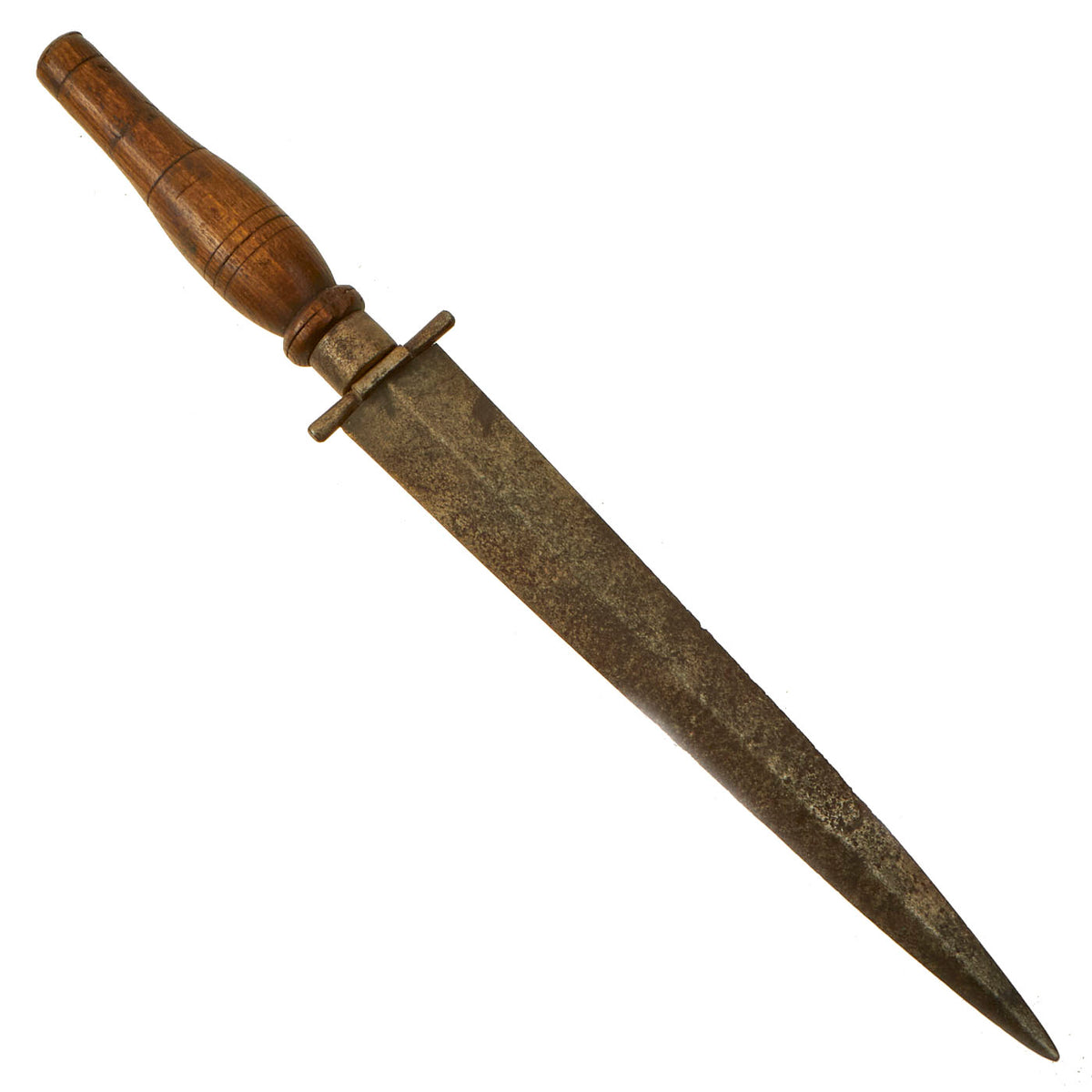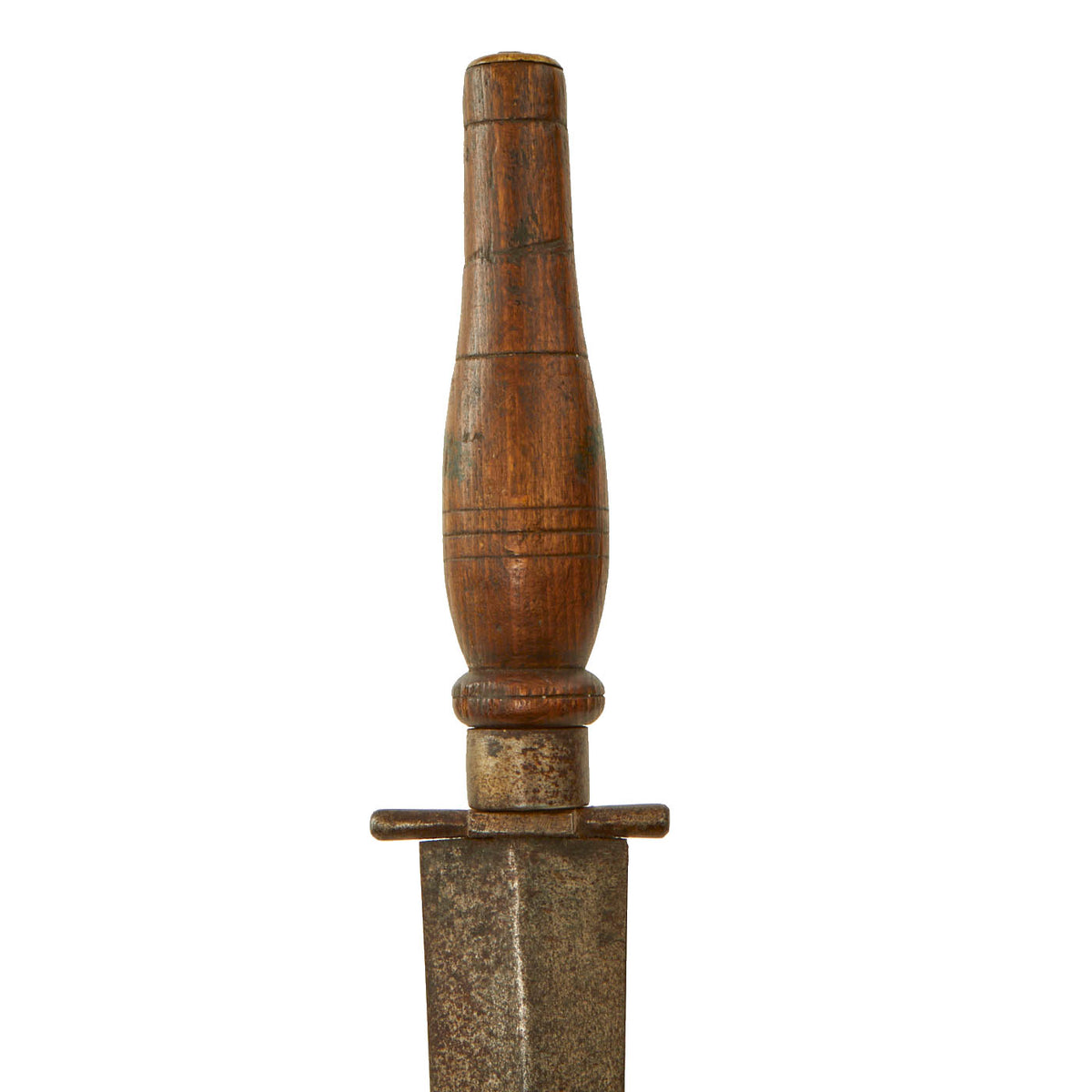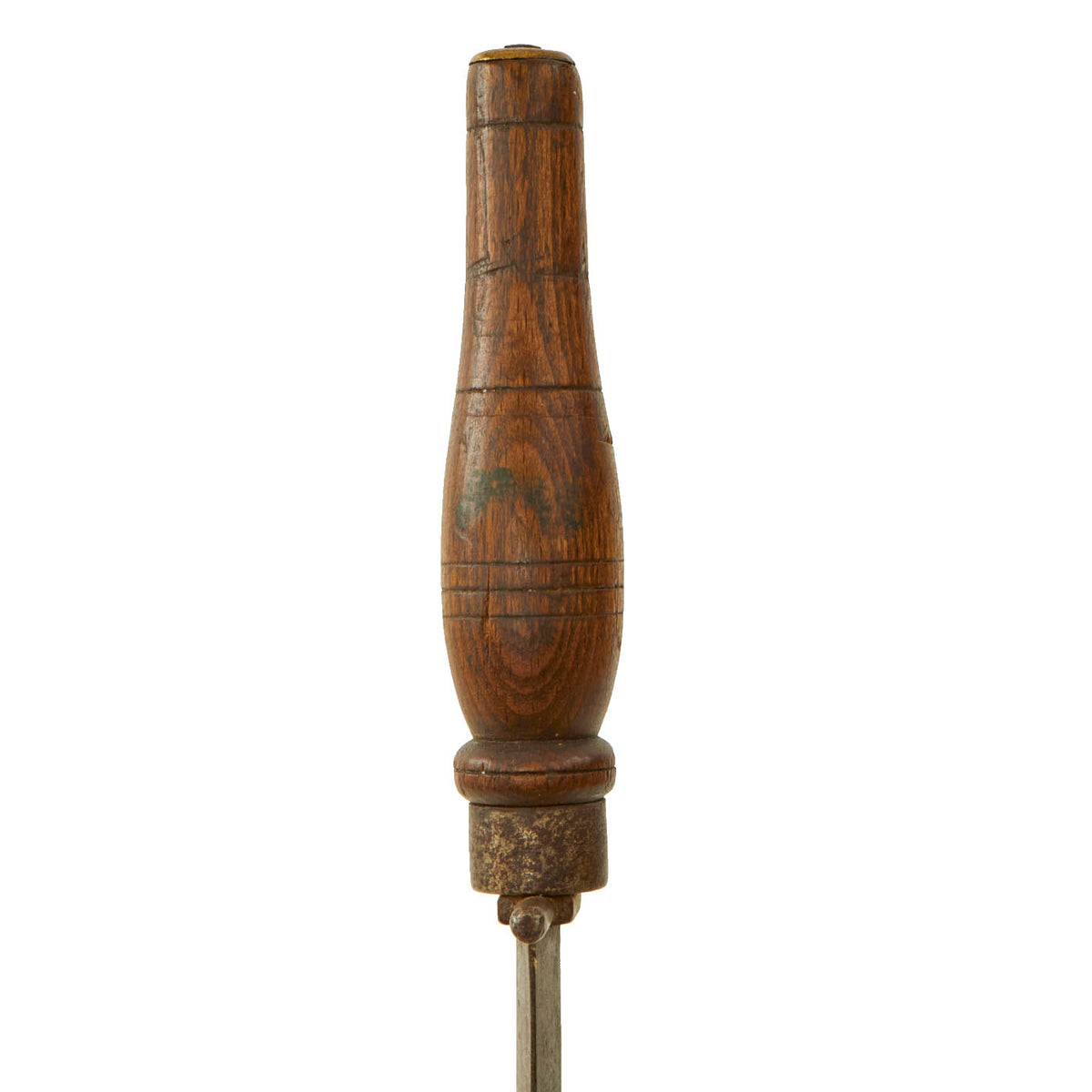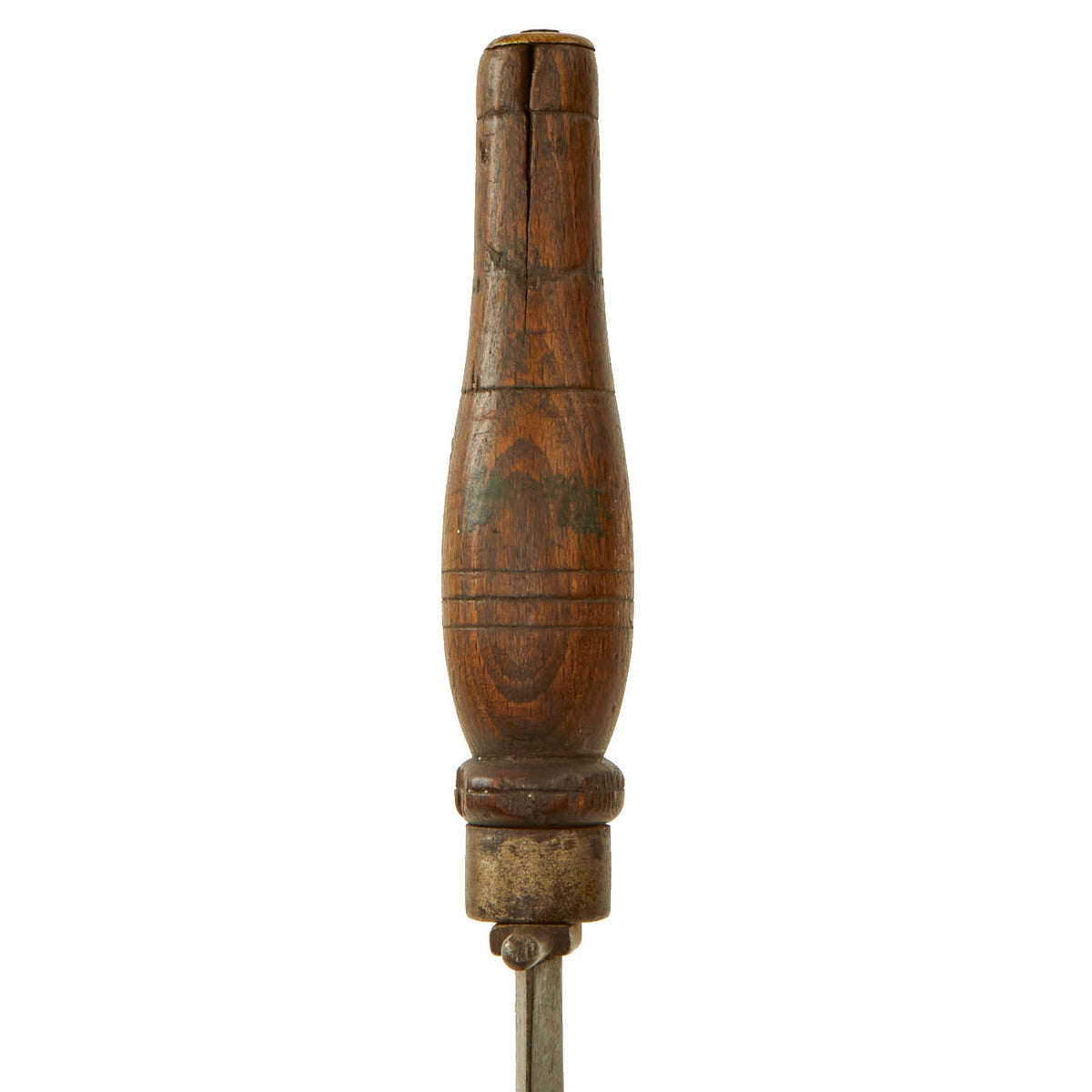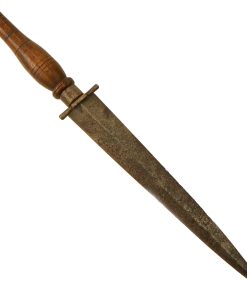Original European Early 18th Century Silver and Brass Mounted Plug Bayonet Original Items
$ 395,00 $ 118,50
Original Item: Only One Available. This lovely example of a plug bayonet dates back to the early 17th century, circa 1700 to 1730s. We believe this bayonet to be of either Spanish or German origin from its design, but could very well be English or American, which during this time would have been nearly identical. This type of bayonet was used exactly how it sounds, by plugging the barrel of the musket, turning it into essentially a spear.
The first recorded instance of a bayonet proper is found in the Chinese military treatise, Binglu published in 1606. It was in the form of the Son-and-mother gun, a breech-loading musket that was issued with a roughly 57.6 cm (22.7 in) long plug bayonet, giving it an overall length of 1.92 m (6 ft 4 in) with the bayonet attached. It was labeled as a “gun-blade” with it being described as a “short sword that can be inserted into the barrel and secured by twisting it slightly” that it is to be used “when the battle have depleted both gunpowder and bullets as well as fighting against bandits, when forces are closing into melee or encountering an ambush” and if one “cannot load the gun within the time it takes to cover two bu (3.2 meters) of ground they are to attach the bayonet and hold it like a spear”.
Early bayonets were of the “plug” type, where the bayonet was fitted directly into the barrel of the musket. This allowed light infantry to be converted to heavy infantry and hold off cavalry charges. The bayonet had a round handle that slid directly into the musket barrel. This naturally prevented the gun from being fired. The first known mention of the use of bayonets in European warfare was in the memoirs of Jacques de Chastenet, Vicomte de Puységur. He described the French using crude 1-foot (0.30 m) plug bayonets during the Thirty Years’ War (1618–1648). However, it was not until 1671 that General Jean Martinet standardized and issued plug bayonets to the French regiment of fusiliers then raised. They were issued to part of an English dragoon regiment raised in 1672, and to the Royal Fusiliers when raised in 1685.
This plug bayonet measures 13 ⅛” total with an 8 ½” double edged blade. The wood handle makes up 4 ½” and is in lovely condition with a brass plate located at the bottom of the handle and a silver colored band at the top. The condition of the bayonet is close to excellent for the age, the blade even retains some of the original finish! There is the expected cracks in the wood handle due to age and wear, but still in great condition for being nearly 300 years old.
A lovely example that comes more than ready for further research and display.
Fast Shipping with Professional Packaging
Thanks to our longstanding association with UPS FedEx DHL, and other major international carriers, we are able to provide a range of shipping options. Our warehouse staff is expertly trained and will wrap your products according to our exact and precise specifications. Prior to shipping, your goods will be thoroughly examined and securely secured. We ship to thousands clients each day across multiple countries. This shows how we're dedicated to be the largest retailer on the internet. Warehouses and distribution centres can be located throughout Europe as well as the USA.
Note: Orders with more than one item will be assigned a processing date depending on the item.
Before shipping before shipping, we'll conduct a thorough inspection of the items you have ordered. Today, the majority of orders will be delivered within 48 hours. The delivery time will be between 3-7 days.
Returns
The stock is dynamic and we cannot completely manage it because multiple stakeholders are involved, including our factory and warehouse. So the actual stock may alter at any time. It's possible that you may not receive your order once the order has been made.
Our policy is valid for a period of 30 days. If you don't receive the product within 30 days, we are not able to issue a refund or an exchange.
You can only return an item if it is unused and in the same state as the day you received it. You must have the item in its original packaging.
Related products
Uncategorized
Uncategorized
Uncategorized
Uncategorized
Uncategorized
Uncategorized
Uncategorized
Uncategorized
Uncategorized
Uncategorized
Uncategorized
Angolan Rebel 1970s era 60mm Inert Display Mortar from Angolan Civil War Original Items
Uncategorized
Uncategorized
Uncategorized
Uncategorized
Uncategorized
Band of Brothers ORIGINAL GERMAN WWII Le. F.H. 18 10.5cm ARTILLERY PIECE Original Items
Uncategorized
Uncategorized
Uncategorized
Uncategorized
